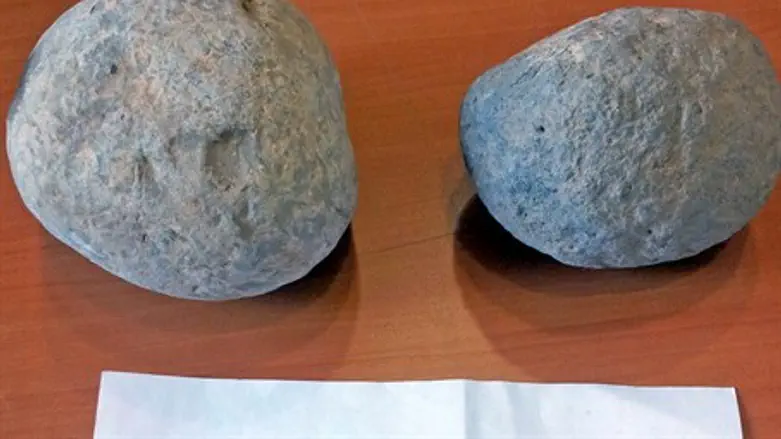
In a surprising turn of events, an antiquities robber last week handed in two 2,000-year-old Roman sling stones that he had stolen 20 years ago, leaving them in the courtyard of the Museum of Islamic and Near Eastern Cultures in Be'er Sheva.
Amos Cohen, an employee of the museum, made the surprising discovery of the stones together with a typed note left by an anonymous individual in a bag in the courtyard.
"These are two Roman ballista balls from Gamla, from a residential quarter at the foot of the summit. I stole them in July 1995 and since then they have brought me nothing but trouble. Please, do not steal antiquities!" read the note from the repentant robber.
Dr. Dalia Manor, director of the museum, hurried to report the find to the Israel Antiquities Authority (IAA), and soon the stones will join other ballista balls from Gamla housed in the IAA's National Treasures Department.
Similar stones are currently on display in Gamla Nature Reserve, where the thief found them. He even included a map of the reserve with an "X" written in pen indicating where he found the sling stones.
"Almost 2,000 such stones were found during the archaeological excavations in the Gamla Nature Reserve, and this is the site where there is the largest number of ballista stones from the Early Roman period," said Dr. Danny Syon of the IAA, who excavated at Gamla for many years.
"The Romans shot these stones at the defenders of the city in order to keep them away from the wall, and in that way they could approach the wall and break it with a battering ram. The stones were manually chiseled on site by soldiers or prisoners."
The IAA noted in a statement that this is in fact not the first time that antiques thieves showed remorse for stealing precious archaeological finds.
Previously a 2,000-year-old Jewish coffin was returned to the Unit for the Prevention of Antiquities Robbery, after having been kept in the bedroom of a resident of Tel Aviv until he realized that he actually had an ancient coffin in his possession and not some benign relic.
In another case a minister from New York state apologized on behalf of a member of his congregation who took an ancient stone from Jerusalem over ten years earlier and felt remorse for his actions. The ancient stone was returned to the National Treasures Department.